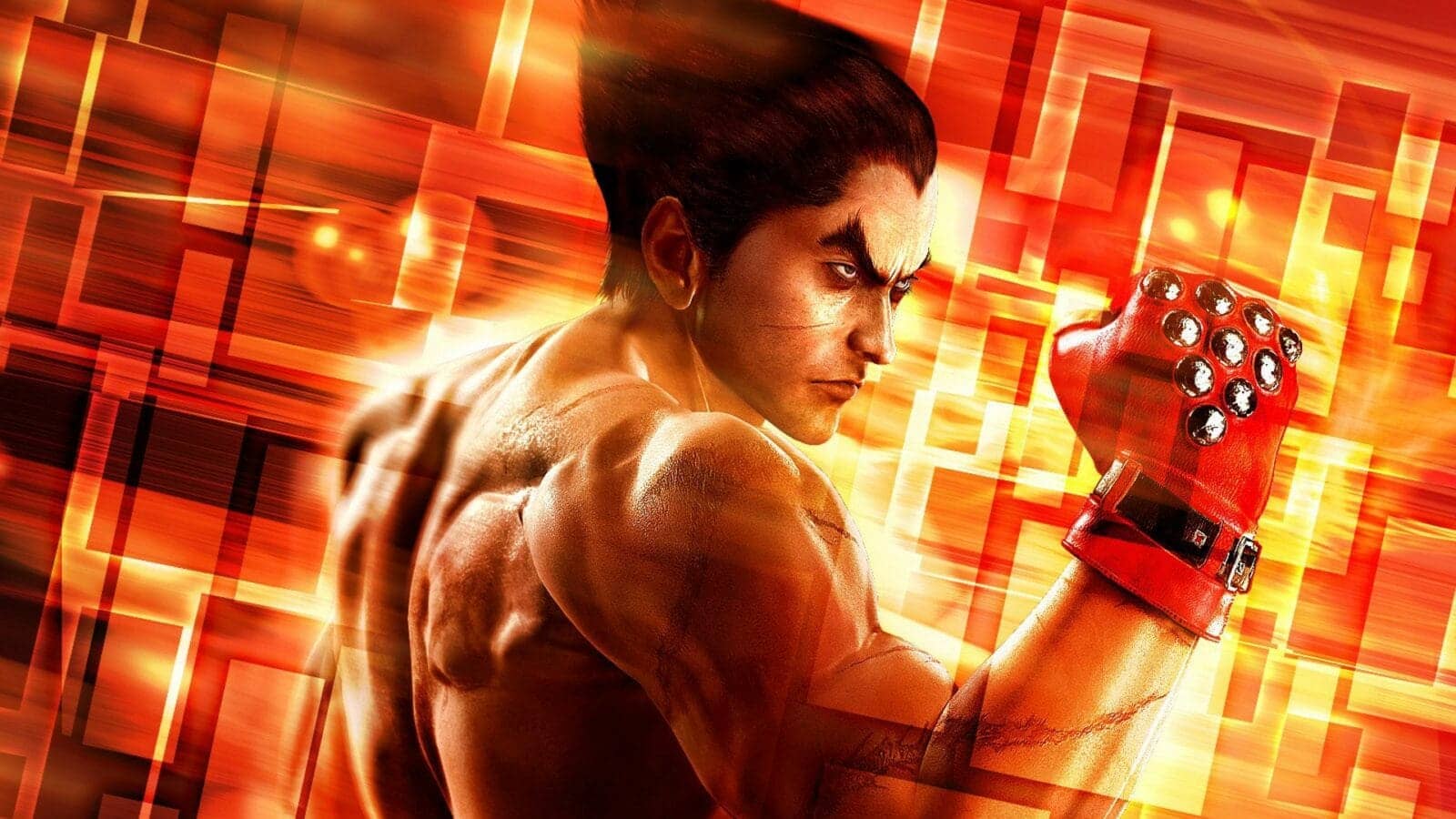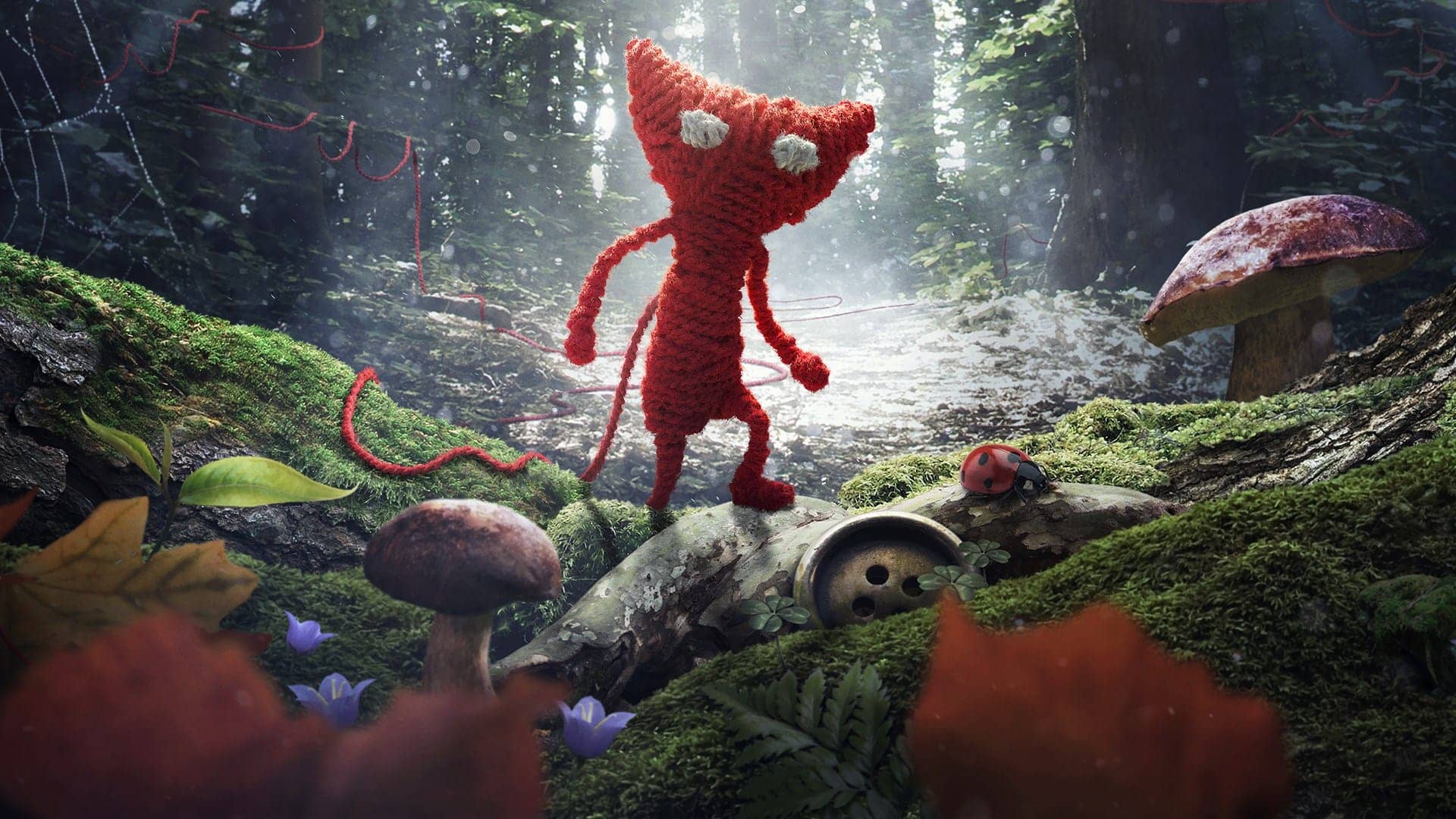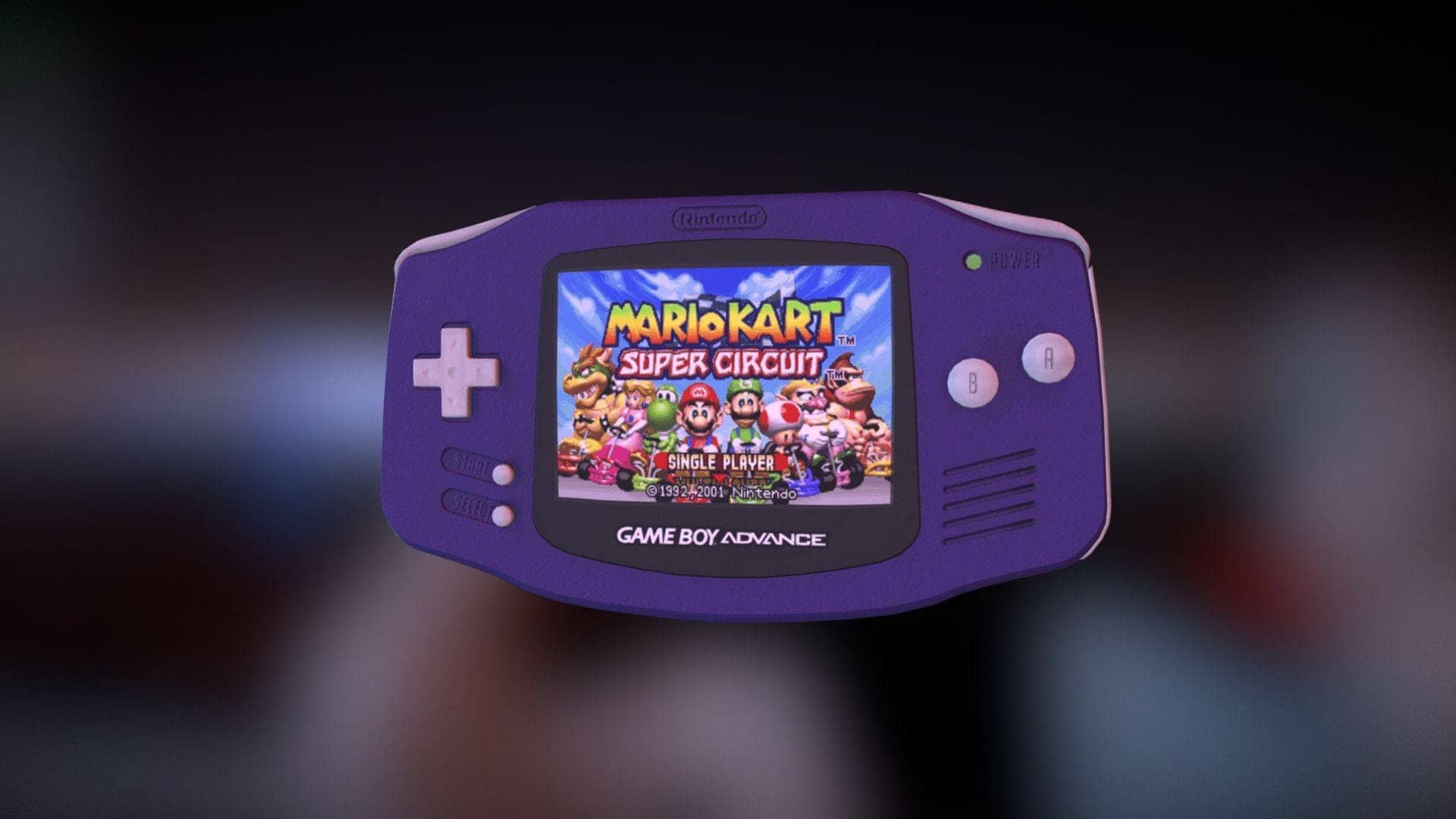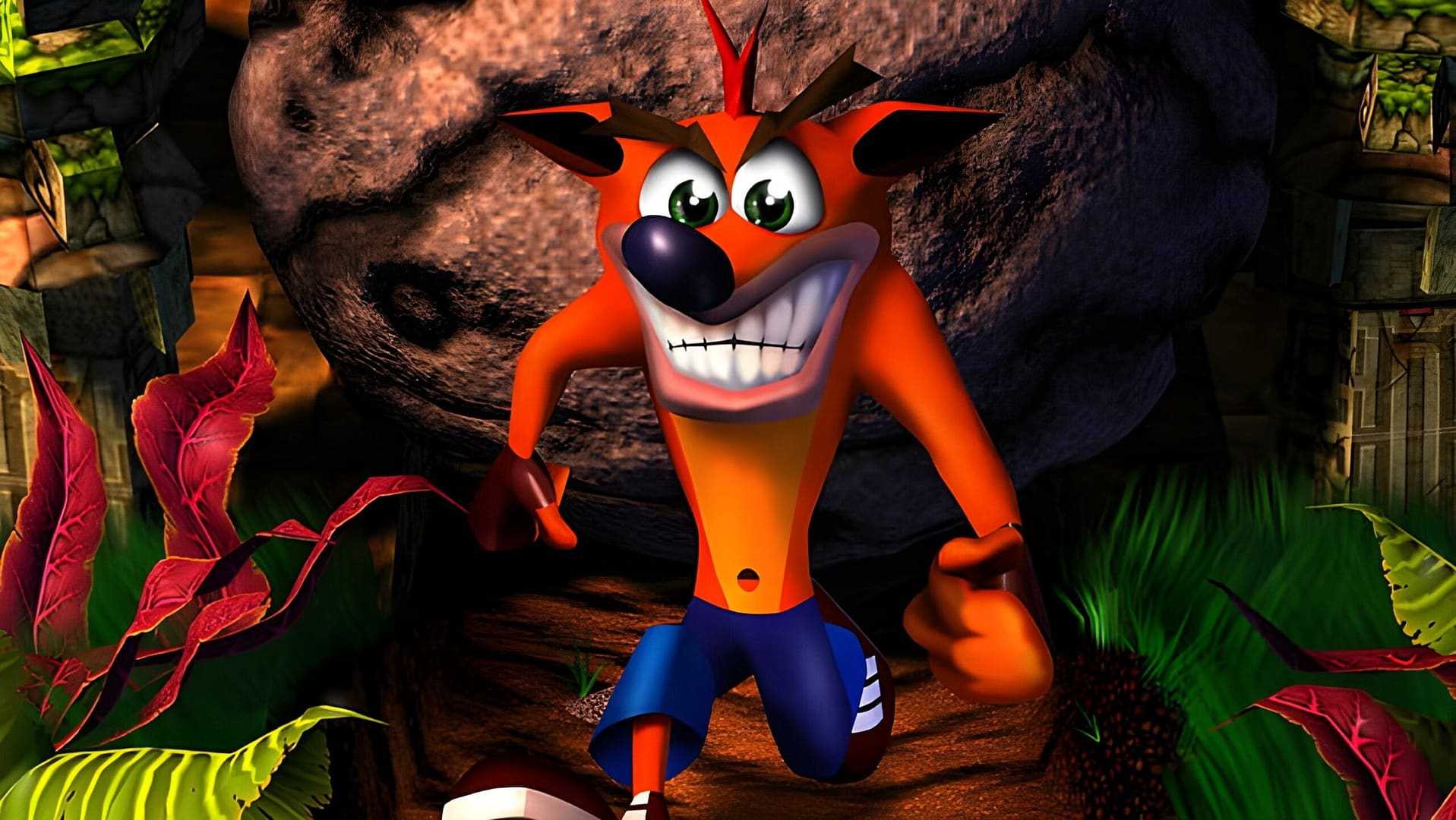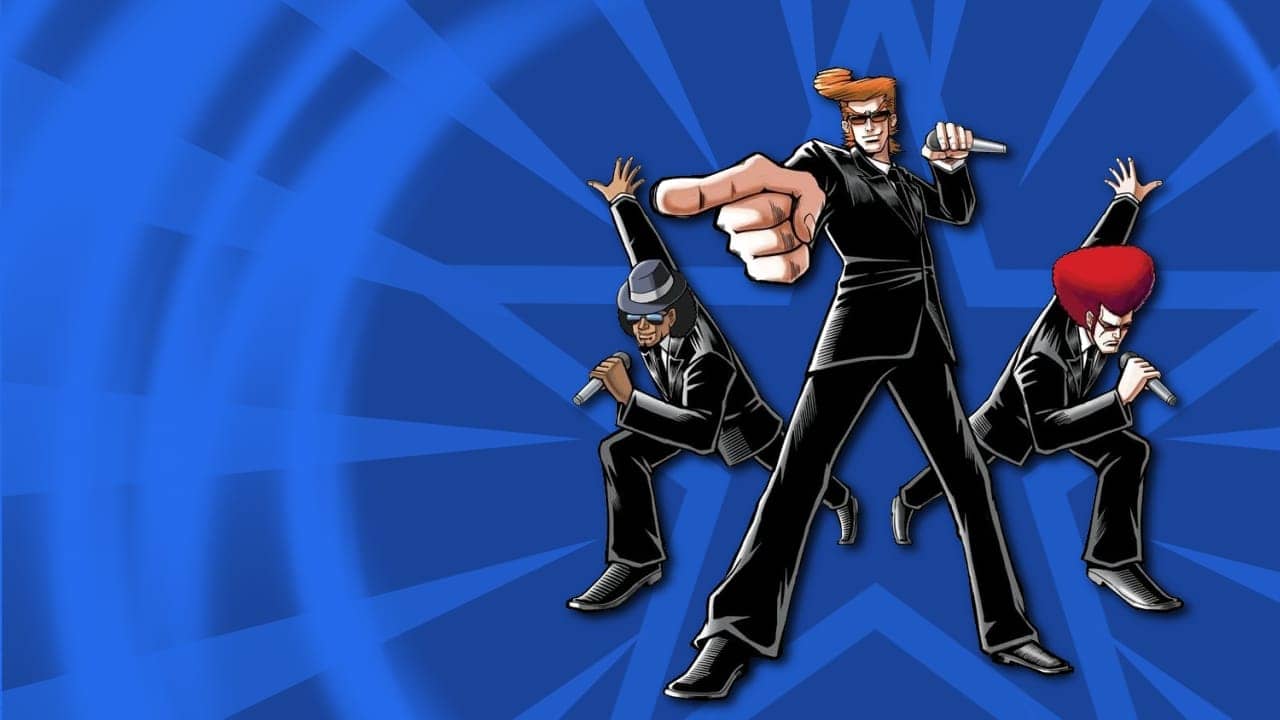The PlayStation 2 wasn’t just a console—it was a coliseum. A digital arena where warriors, brawlers, and spandex-clad superheroes collided in a glorious storm of pixels and poly counts. The PlayStation 2 turned the living room into a virtual arcade, delivering everything from arcade-perfect ports that made you question why you ever left the arcade, to some of the weirdest, wildest crossovers that had you wondering, “Wait, these characters actually fight together?”
You could throw down in gritty back alleys, clash swords under moonlit skies, or go full kaiju and level a city block before lunch. And the variety? Unmatched. Whether you were a hardcore competitor chasing frame-perfect combos or just a button-mashing party animal looking to wreck your friends, the PS2 had you covered. This was the era when developers threw convention out the window and embraced chaos, creativity, and, yes, sometimes downright madness — all in the name of the fight.
Buckle up, because this list is a knockout tour through the 30 of the most finest PS2’s fighters — the ones that defined a generation and still pack a punch today.
Tekken 5

- Developer: Namco
- Release Date: February 24, 2005
When Tekken 5 landed in 2005, it didn’t just raise the bar—it hurled it into the stratosphere. The presentation was pure arcade decadence—silky character models, stunning arenas dripping with detail, and a soundtrack that swung from pulse-pounding techno to moody, atmospheric riffs. The roster was massive, a true buffet of styles and personalities. From legacy fighters like Kazuya and Paul to newcomers like Asuka Kazama and Feng Wei, there was a combat style to match any temperament. The controls were precise, yet deceptively deep. One minute, you were pulling off crisp, single-button counters. The next, you were knee-deep in ten-hit strings, watching your opponent’s health bar evaporate.
Why It’s Worth Playing: Tekken 5 is the PS2’s fighting crown jewel—a perfect blend of technical mastery and pure, unfiltered fun. It’s accessible enough for casual bouts yet deep enough to keep tournament players grinding for mastery years after release. Even today, its fluid animations, responsive controls, and sheer character variety make it a joy to revisit.
Tekken Tag Tournament

- Developer: Namco
- Release Date: March 4, 2000
When the PS2 launched, Tekken Tag Tournament arrived like a champagne cork popping off at midnight—loud, flashy, and impossible to ignore. Tag mechanics opened up a Pandora’s box of strategy, letting players swap characters mid-combo, chain devastating team assaults, and recover health with just the right tactical switch. The presentation was jaw-dropping for its time. Characters looked sharper than ever, arenas shimmered with next-gen polish, and the particle effects gave each blow a satisfying visual punch. The roster was colossal, pulling in fighters from across Tekken history, giving every fan a chance to dust off their old favorites and form dream pairings. It was as much a celebration as it was a competition.
Why It’s Worth Playing: Tekken Tag Tournament still stands as one of the most stylish and inventive entries in the franchise. The tag system remains a masterstroke of fighting game design, making each match a layered mental duel. Even decades later, it’s a guaranteed crowd-pleaser, perfect for couch rivalries and competitive gatherings alike.
Soulcalibur II

- Developer: Project Soul
- Release Date: March 27, 2003
Soulcalibur II didn’t just polish the blade—it forged a masterpiece. Sure, the GameCube version nabbed Link as its guest fighter, but the PS2 had its own ace in the hole: Heihachi Mishima from Tekken. His bare-fisted yet somehow every bit as dangerous as the sword-wielding elite. Visually, Soulcalibur II was a showstopper—lush, detailed stages spanned from moonlit gardens to storm-lashed galleons, each a backdrop worthy of a final showdown. The roster was both generous and diverse, offering everything from the grace of Xianghua to the raw, sweeping power of Astaroth. The fluidity of movement and the dazzling range of weapon styles made every duel feel like a dance with lethal consequences.
Why It’s Worth Playing: The PS2 version of Soulcalibur II delivers one of the tightest, most exhilarating weapon-based fighters ever made. It was accessible for newcomers, yet its layers of depth rewarded those who mastered the guard impacts, sidesteps, and perfectly timed counters. It’s fast, beautiful, endlessly replayable—and still sharp enough to draw blood.
Soulcalibur III

- Developer: Project Soul
- Release Date: October 25, 2005
Soulcalibur III was where the series decided to stretch its legs—and swing its sword in new directions. From the sprawling “Chronicles of the Sword” story campaign to a surprisingly robust character creation system. Project Soul packed the game with experimental modes. You could forge your own warrior, kit them out with weapons, and march them into the arena alongside icons like Mitsurugi, Sophitia, and Nightmare. The core combat remained a spectacle of speed and precision. Every clash of steel rang with weight, every sidestep felt razor-close to danger. The arenas were richer and more dynamic, from sun-drenched courtyards to wind-swept cliffside duels where one wrong move could send you plummeting.
Why It’s Worth Playing: Soulcalibur III took the series’ already-excellent swordplay and wrapped it in layers of customization, storytelling, and style. It’s a deep cut in the best way possible—sharp, daring, and unlike any other fighter of its time.
Virtua Fighter 4 Evolution

- Developer: Sega AM2
- Release Date: March 13, 2003
Virtua Fighter 4 Evolution wasn’t just a fighting game—it was a martial arts thesis, delivered with surgical precision. Where other fighters thrived on spectacle, VF4 Evo thrived on mastery—reading an opponent’s timing, breaking their rhythm, and countering with a move so clean it felt like cutting silk. Not only did the PS2 port faithfully capture the arcade experience, it expanded it—offering a robust training mode that taught players the nuances of each character’s style, plus an arcade quest mode that simulated climbing the ranks in Japan’s arcade scene. The roster balanced accessibility and depth, from the no-nonsense strikes of Jacky Bryant to the fluid, unpredictable style of newcomer Goh Hinogami.
Why It’s Worth Playing: Virtua Fighter 4 Evolution is the gold standard for technical 3D fighters. It’s not about flashy gimmicks—it’s about pure skill, honed reflexes, and the satisfaction of winning because you out-thought, not just out-punched, your opponent. Even now, few games demand and reward precision quite like it.
Marvel vs. Capcom 2

- Developer: Capcom
- Release Date: June 29, 2002
Marvel vs. Capcom 2 is chaos bottled and served with a side of pure joy. From Spider-Man and Wolverine to Mega Man, Jill Valentine, and an anthropomorphic cactus, it’s the fighting game equivalent of an all-you-can-eat buffet. While the sheer absurdity of the roster is part of its charm, the charm lies in how it all works. Tag mechanics let you swap between three characters mid-match, pull off outrageous assist combos, and chain super moves into screen-shattering fireworks. Matches blur into a flurry of projectiles, air combos, and hyper moves so over-the-top they practically demand a slow clap. The sprites are vibrant and expressive, the backgrounds drip with colorful energy, and that jazzy, unforgettable soundtrack ties it all together in style.
Why It’s Worth Playing: Marvel vs. Capcom 2 is lightning in a bottle—a high-speed, high-style brawler that’s equal parts chaos and craftsmanship. Whether you’re in it for the competitive depth or just to see Hulk team up with Ryu to obliterate Captain Commando, it’s a guaranteed good time.
Capcom vs. SNK 2: Mark of the Millennium 2001

- Developer: Capcom
- Release Date: August 14, 2001
Capcom vs. SNK 2 wasn’t just a crossover—it was a clash of fighting game philosophies. On one side, Capcom’s tight, combo-heavy precision; on the other, SNK’s bold, unpredictable flair. The result? A 2D showdown for the ages, packed with dream matches fans had been sketching in their notebooks for years. Want Ryu to throw down against Terry Bogard? Geese Howard testing his mettle against M. Bison? The genius of CvS2 lay in its “Groove” system—a set of six distinct playstyles inspired by different fighting games. Add in a sprawling roster and stages bursting with detail, and you had a fighter as flexible as it was fierce.
Why It’s Worth Playing: Whether you wanted parry mechanics à la Street Fighter III, SNK’s dodge rolls, or a more aggressive meter-build style, Capcom vs. SNK 2 let you fight your way. It is a love letter to 2D fighting history, offering staggering variety and the kind of matchups you can still brag about decades later. It’s stylish, strategic, and endlessly replayable—the perfect blend of two legendary worlds.
Guilty Gear XX Accent Core Plus

- Developer: Arc System Works
- Release Date: March 27, 2008
Guilty Gear XX Accent Core Plus is a kaleidoscope of high-speed chaos, blistering combos, and character designs so wild they make most fighting game rosters look like they’re dressed for a job interview. From Sol Badguy’s flaming sword swings to Faust’s deranged, slapstick attacks, every fighter is a showman, every match a rock concert where the mosh pit just happens to be fatal. Air dashes, Roman Cancels, and complex juggle systems demand precision, but reward you with the kind of momentum-shifting plays that can turn a losing round into a highlight reel. The soundtrack? Pure headbanging ecstasy, a relentless wall of riffs that makes every fight feel like an encore.
Why It’s Worth Playing: Guilty Gear XX Accent Core Plus is proof that style and substance can not only coexist—they can headlock each other in the middle of a screaming guitar solo. It’s gorgeous, mechanically rich, and unapologetically over the top. For players who want their fighters loud, fast, and dripping with personality, it’s the full package.
Street Fighter Anniversary Collection

- Developer: Capcom
- Release Date: August 18, 2004
Street Fighter Anniversary Collection brings two of Capcom’s most celebrated entries—Street Fighter III: 3rd Strike and Hyper Street Fighter II: The Anniversary Edition—together in one disc. 3rd Strike brings that crisp, fluid animation and parry-heavy mind games, where a single perfect block can swing the momentum of an entire match. Hyper SFII, meanwhile, is the ultimate nostalgia trip, letting you pit characters from different Street Fighter II versions against each other, complete with their quirks, frame data oddities, and all. The ports are arcade-accurate down to the smallest detail, and the polish is unmistakable.
Why It’s Worth Playing: From the jazzy beats and painterly style of 3rd Strike to the timeless chiptune grit of SFII, this collection is a sensory tour through decades of fighting history. It’s two pillars of the genre, preserved and perfected for the PS2. Whether you’re chasing high-level parry battles or just reliving the fireball wars of the ’90s, this is the definitive Street Fighter time capsule.
The King of Fighters 2002 & 2003

- Developer: SNK Playmore
- Release Date: February 8, 2005
Bundling KOF 2002 and KOF 2003 onto a single PS2 disc was like handing SNK fans a double shot of pure adrenaline. On one side, you’ve got 2002—The Dream Match—a no-nonsense, story-free entry with a sprawling roster that pulls in fighters from across the series’ history. It’s tight, fast, and unapologetically focused on gameplay above all else. On the other hand, 2003 shakes things up with a bold new tag system, letting players swap characters mid-match for fresh combo routes, sneaky assists, and momentum-shifting reversals. Visually, both games pop with classic SNK flair—crisp 2D sprites, sharp animations, and stages that feel alive with energy.
Why It’s Worth Playing: This collection delivers two distinct KOF experiences—one a pure celebration of the past, the other a daring step into new mechanics. The combined roster is enormous, and the gameplay variety between the two titles makes this bundle feel like a masterclass in how to evolve a fighting franchise without losing its identity. Together, they’re a must-own for anyone who wants to experience the full range of SNK’s 2D fighting genius on the PS2.
King of Fighters XI

- Developer: SNK Playmore
- Release Date: June 22, 2006
King of Fighters XI wasn’t just another entry—it was SNK firing on all cylinders. Building on the tag mechanics introduced in 2003, XI refined them to near-perfection, allowing for lightning-fast character swaps, extended juggle combos, and seamless pressure strings that kept opponents guessing. The roster was stacked with fan favorites and fresh faces, blending old-school legends like Kyo and Iori with newcomers who fit right into the series’ lore. The sprite work was gorgeous—crisp, expressive, and packed with detail—while the stages pulsed with personality, from neon-lit cityscapes to eerie, atmospheric battlefields.
Why It’s Worth Playing: KOF XI is arguably the smoothest, most competitive 2D fighter on the PS2. It’s fast, technical, and endlessly replayable, offering enough depth to keep veterans hooked while still being accessible for determined newcomers. For many fans, this is SNK’s magnum opus of the era.
The King of Fighters 2006

- Developer: SNK Playmore
- Release Date: April 27, 2006
The King of Fighters 2006 wasn’t afraid to break tradition. A fully 3D sequel to Maximum Impact, it took SNK’s storied roster and reimagined them for a faster, flashier, and more explosive arena. The result was a fighter that felt both familiar and radically different—Kyo’s flame punches and Iori’s savage slashes were still here, but now they were paired with fluid sidesteps, cinematic supers, and over-the-top stage transitions.
The game leaned into style, giving characters updated designs and even a few exclusive moves to make them pop in three dimensions. The combo system was loose and experimental, allowing players to chain attacks with a freedom that 2D KOF entries rarely offered. Add in a generous selection of modes, unlockable costumes, and a rock-solid framerate, and you had a brawler that could keep you hooked for hours.
Why It’s Worth Playing: KOF 2006 is pure popcorn fun—a high-energy, easy-to-pick-up fighter that still rewards skillful play. It’s a rare blend of classic character charm and modern presentation, making it a worthy outlier in SNK’s catalog and one of the PS2’s most entertaining 3D fighters.
Bloody Roar 3

- Developer: Eighting
- Release Date: March 1, 2001
When most fighting games stuck to human-on-human combat, Bloody Roar 3 roared in with a wild twist—literally. The series’ signature mechanic lets fighters morph into powerful beast forms mid-battle, completely changing the flow of the match. One moment you’re trading jabs as a martial artist; the next, you’ve transformed into a hulking tiger, lethal bat, or rampaging wolf with a fresh set of devastating moves. Stages were fully 3D, ring-outs were in play, and combos felt satisfyingly crunchy whether you were human or beast. The transformations weren’t just visual flair either—they regenerated health, boosted power, and opened up new strategic layers.
Why It’s Worth Playing: Bloody Roar 3 is pure, over-the-top fun. It’s the perfect pick when you want a fighter that doesn’t take itself too seriously, but still offers depth and style. Few things in gaming are as satisfying as turning the tide of a match with a last-second beast mode comeback.
The Rumble Fish

- Developer: Dimps
- Release Date: March 17, 2005
Originally an Atomiswave arcade title, The Rumble Fish made its way to the PS2 in Japan, bringing along its distinctive, hand-drawn art style and smooth, almost hypnotic character animations. Gameplay-wise, it leaned toward technical, footsie-heavy fighting, with a two-meter system that separated offense and defense. This meant players had to manage their resources carefully, balancing powerful offensive supers with guard-breaking defensive counters. The roster may have been small, but each fighter had a distinct personality, from street punks to masked assassins.
Why It’s Worth Playing: If you’re a fan of gorgeous 2D fighters with deep mechanics and a unique flair, The Rumble Fish is a must-try. It’s a stylish underdog that proves some of the best fighting games never leave the cult classic stage. This game never got the same spotlight as Street Fighter or Tekken, but among fighting game fans, it’s a hidden gem that deserves way more love.
Fight Night Round 3

- Developer: EA Chicago
- Release Date: February 20, 2006
Fight Night Round 3 took boxing on the PS2 to the next level, blending realistic mechanics with pure spectacle. The game nailed the ebb and flow of a real boxing match: tense defensive footwork, explosive counterpunches, and that satisfying moment when you land the perfect shot. Graphically, it was a knockout for the PS2 era. Fighter models glistened with sweat, facial damage was brutally detailed, and slow-motion replays of knockdowns added a cinematic flair that made every KO feel like a highlight reel moment on ESPN Classic. The roster covered legends like Muhammad Ali and Oscar De La Hoya, as well as modern stars like Bernard Hopkins and Arturo Gatti, letting fans create dream matchups across eras.
Why It’s Worth Playing: While the series was already respected for its innovative “Total Punch Control” system, Fight Night Round 3 refined the formula, making every jab, hook, and uppercut feel crisp and deliberate. It captured the sweet science in a way that made every match feel like a pay-per-view main event, making it one of the most immersive boxing experiences ever put on a console.
Dragon Ball Z: Budokai 3

- Developer: Dimps
- Release Date: November 16, 2004
Dragon Ball Z: Budokai 3 distilled the anime’s high-energy battles into one of the most accessible yet skillful fighters on the PS2. The addition of the Dragon Rush mechanic brought mind-game-heavy cinematic clashes, while the Teleport Counter system made for lightning-fast reversals worthy of a Saiyan showdown. The cel-shaded art style perfectly captured the look of the show, with flashy energy blasts, dynamic camera angles, and faithful character animations. And the roster—oh, the roster—was massive, spanning Dragon Ball, Z, and even GT, letting players pit Super Saiyan 4 Goku against Kid Goku just for the fun of it. The story mode’s free-roaming map was a welcome twist, letting you fly around the world, find hidden battles, and collect capsules to customize your fighters.
Why It’s Worth Playing: Budokai 3 remains the DBZ game fans most often hold up as “the one that got it right,” striking the perfect balance between anime spectacle and competitive depth. It’s a nostalgia trip that still punches hard today.
Dragon Ball Z: Infinite World

- Developer: Dimps
- Release Date: December 5, 2008
Dragon Ball Z: Infinite World took the rock-solid combat engine fans adored—complete with Ki management, Teleport Counters, and Dragon Rush—and smoothed out the pacing, tightening combos and streamlining transformations for a faster, more fluid fight experience. The game packed an enormous roster covering Dragon Ball, Z, GT, and the movies, making it a true celebration of the franchise. Its Mission Mode replaced the free-roam world of Budokai 3 with a variety of challenges—some story-based, others skill-focused—that tested everything from raw fighting ability to mini-game mastery. While it lacked some of Budokai 3’s charm in exploration, it made up for it with crisper visuals, sharper cel-shading, and balanced gameplay tweaks that gave veterans new reasons to dive back in.
Why It’s Worth Playing: Infinite World is the hidden gem of PS2 DBZ games—essentially Budokai 3’s gameplay refined to near perfection, with more characters, smoother mechanics, and enough challenge to keep even seasoned Saiyan warriors on their toes.
Super Dragon Ball Z

- Developer: Dimps
- Release Date: June 29, 2006
Super Dragon Ball Z took a sharp left turn from the Budokai series, embracing a more traditional 2D fighting game style inspired by classics like Street Fighter. Instead of the free-roaming energy blasts and cinematic specials, this game focused on grounded combat, quick footwork, and precise timing. The energy meter still played a huge role, but special moves required careful management and tactical execution rather than button-mashing. Visually, it stood out with a unique comic book aesthetic that made every punch and ki blast pop off the screen like panels ripped straight from the manga. The roster was lean but focused, featuring fan-favorites like Goku, Vegeta, and Cell, each with a distinct fighting style and combo system.
Why It’s Worth Playing: If you want your Dragon Ball Z fights with less flash and more fight—think fast, tight, and tactical—Super Dragon Ball Z delivers an engaging alternative that rewards mastery and precision, offering a refreshing change from the usual anime brawler formula. The absence of 3D movement shifted the spotlight to skillful spacing and punishing counters, making it a favorite among players craving a more technical DBZ fighter.
Naruto Ultimate Ninja 3
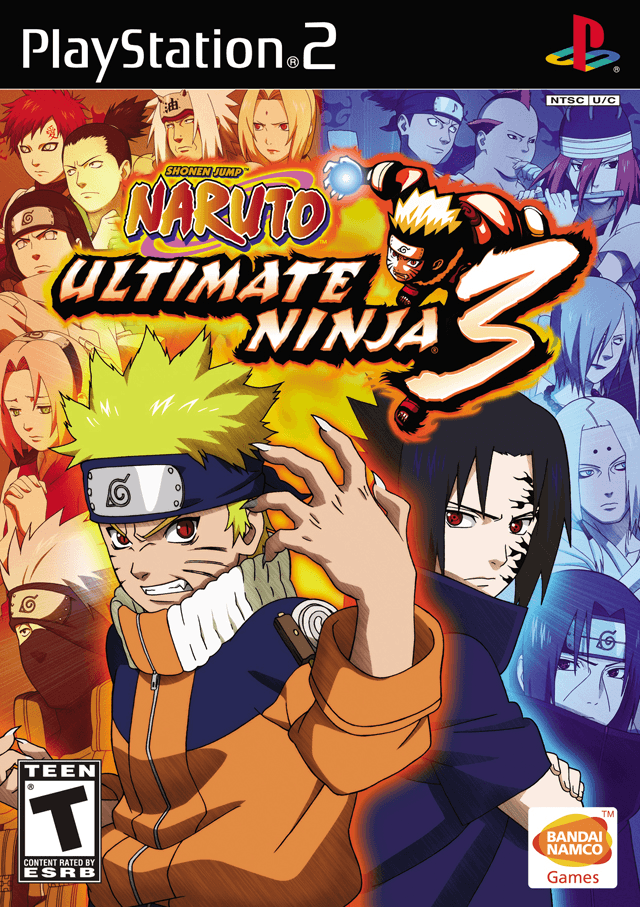
- Developer: CyberConnect2
- Release Date: December 22, 2005
Naruto Ultimate Ninja 3 is like stepping straight into the heart of the Naruto anime, but with turbo-charged battles that never let up. This fighter combines flashy, over-the-top special moves with accessible, frantic gameplay that’s perfect for both die-hard fans and newcomers alike. The roster is packed with fan favorites like Naruto, Sasuke, and Kakashi, plus a slew of hidden characters and alternate versions. The combat is fast and fluid, emphasizing quick movement, jaw-dropping ninjutsu combos, and massive team jutsu that can turn the tide of battle in an instant. The stages are dynamic, often featuring destructible environments and cinematic camera angles that amp up the anime feel.
Why It’s Worth Playing: Ultimate Ninja 3 is the perfect storm of anime fandom and fighting game fun. It’s approachable, visually dazzling, and packed with enough content to keep you throwing shuriken and shouting “Believe it!” well into the night. Whether you’re busting out a Rasengan or summoning a giant shadow clone, the game captures the essence of Naruto’s high-energy ninja warfare.
One Piece: Grand Adventure
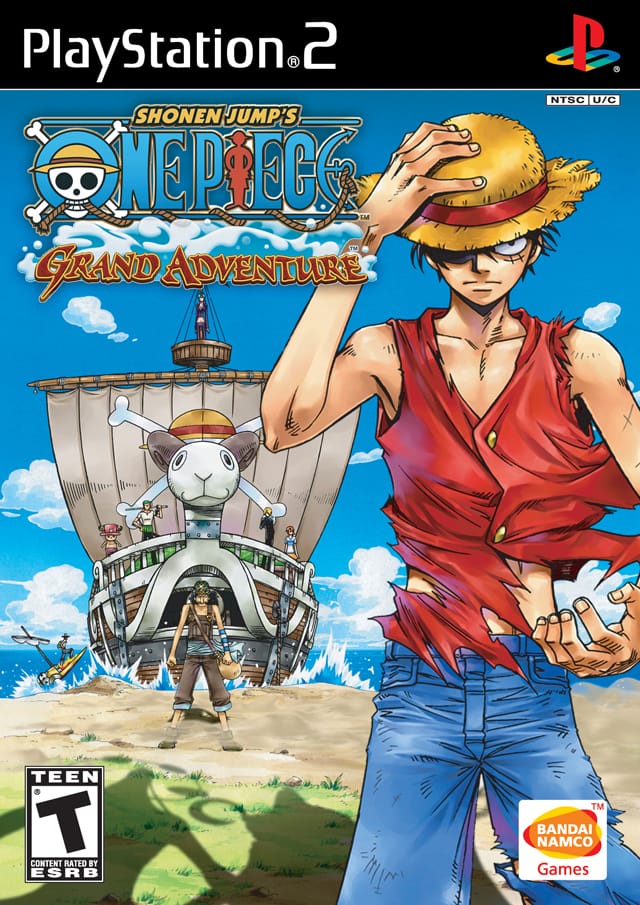
One Piece: Grand Adventure is a vibrant, chaotic romp that blends the spirit of One Piece with fast-paced brawling and party-style combat. Set sail with Luffy and the Straw Hat crew as you duke it out across colorful stages inspired by the Grand Line, with every fight packed with wacky moves, explosive combos, and a healthy dose of pirate swagger. The gameplay leans into multiplayer madness, with items, environmental hazards, and flashy special attacks turning each battle into a rollicking free-for-all. Fans will appreciate the faithful character portrayals and the way each fighter’s unique abilities from the manga and anime translate into gameplay, from Zoro’s sword slashes to Sanji’s lightning-fast kicks.
Why It’s Worth Playing: If you’re craving a fighter that doesn’t take itself too seriously but still delivers fun and frantic battles, One Piece: Grand Adventure is a perfect pick. It’s a party game disguised as a fighter, perfect for casual sessions with friends who just want to let loose and enjoy the chaos.
Battle Stadium D.O.N
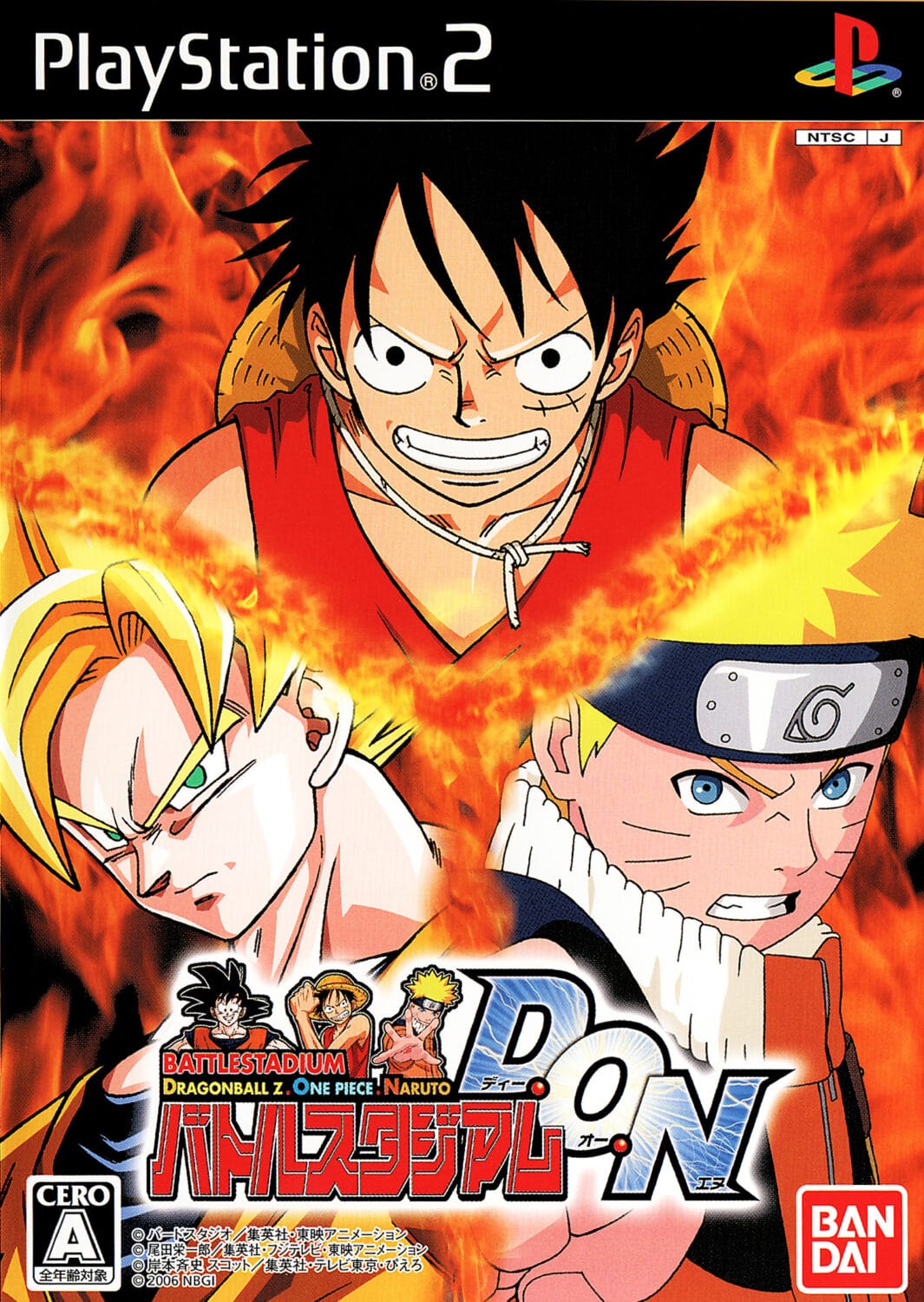
- Developers: Eighting, Q Entertainment
- Release Year: 2006
What if Super Smash Bros. featured only the biggest Shonen Jump legends? That’s Battle Stadium D.O.N in a nutshell. With characters from Dragon Ball Z, One Piece, and Naruto, it delivers fast-paced 4-player brawls in chaotic side-scrolling arenas, complete with over-the-top ultimates and animated backdrops. The roster isn’t massive, but it’s stacked with heavy-hitters, and the dynamic power bar system adds a tug-of-war twist to each fight.
Why It’s Worth Playing: If you grew up on Toonami, this is your dream match-up come to life. It’s fast, fun, and ideal for couch battles with fellow otaku. It’s the anime dream match you didn’t know you needed. Whether you're pitting Goku against Naruto or teaming Luffy with Sasuke, D.O.N is an explosive love letter to anime fandoms—and a multiplayer blast to this day.
Mobile Suit Gundam: Gundam vs. Zeta Gundam
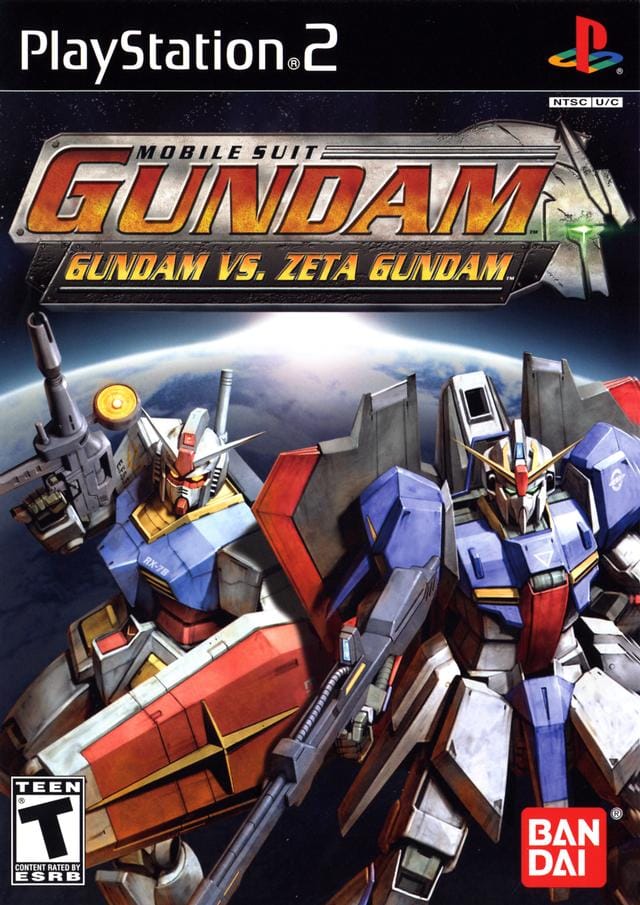
- Developer: Capcom
- Release Year: 2004
Taking a different approach, Gundam vs. Zeta Gundam focused on intense 2v2 battles with dozens of mobile suits pulled straight from the anime. Each unit had distinct playstyles, weapons, and transformation abilities, making strategy just as important as reflexes. Its arcade-style energy and clean visuals gave it a sharp edge, while the tight maps and fast-paced gameplay made every encounter feel like a pivotal anime skirmish. With multiple modes and a progression system, it had staying power too.
Why It’s Worth Playing: This is where Gundam’s tactical side shines. The balance between arcade action and mecha strategy hits a sweet spot, and the roster is a who’s-who of UC greatness. It’s still a blueprint for modern Gundam Versus titles—and a blast to revisit.
Kinnikuman Muscle Grand Prix Max 2: Tokumori

- Developer: AKI Corporation
- Release Date: September 25, 2008
Kinnikuman Muscle Grand Prix Max 2: Tokumori pulls from the absurdly fun Kinnikuman (aka Ultimate Muscle) anime, turning matches into vibrant, chaotic spectacles packed with wild moves and ridiculous costumes. The gameplay is fast and frantic, blending button-mashing mayhem with surprisingly deep grappling mechanics that reward timing and positioning. Each wrestler boasts a colorful arsenal of signature moves—think giant pile drivers, explosive suplexes, and finishers that send the crowd into a frenzy. The arenas burst with personality, featuring hazards and interactive elements that keep players on their toes.
Why It’s Worth Playing: For fans of wrestling games that don’t take themselves seriously but still pack a punch, Kinnikuman Muscle Grand Prix Max 2 is a must-play. It’s pure, unabashed fun—equal parts nostalgia and chaos wrapped in a rainbow of muscles and madness. If professional wrestling were a cartoon on steroids, Grand Prix Max 2 would be the main event.
Victorious Boxers 2: Fighting Spirit

- Developer: ESP
- Release Date: December 22, 2004
Building on the success of the first title, Victorious Boxers 2: Fighting Spirit combines tight, arcade-style boxing mechanics with a deep career mode that puts you in the shoes of Ippo Makunouchi and his rivals. You’ll train, spar, and climb the ranks while experiencing story arcs straight out of the beloved Hajime no Ippo manga and anime. The gameplay strikes a fine balance between accessibility and depth, with fluid controls that capture the feel of real boxing combos and strategic positioning. Signature moves from the anime, like the Dempsey Roll and Gazelle Punch, bring excitement to every fight, while the detailed animations and dramatic cutscenes amplify the narrative stakes.
Why It’s Worth Playing: Victorious Boxers 2: Fighting Spirit isn’t just a boxing game—it’s an anime-fueled journey into the heart of the sweet science. For fans of boxing and anime alike, Fighting Spirit is a knockout. It delivers thrilling matches wrapped in a heartfelt story, making it one of the most engaging sports-fighting hybrids on the PS2.
Hokuto no Ken: Shinpan no Sousousei Kengo Retsuden
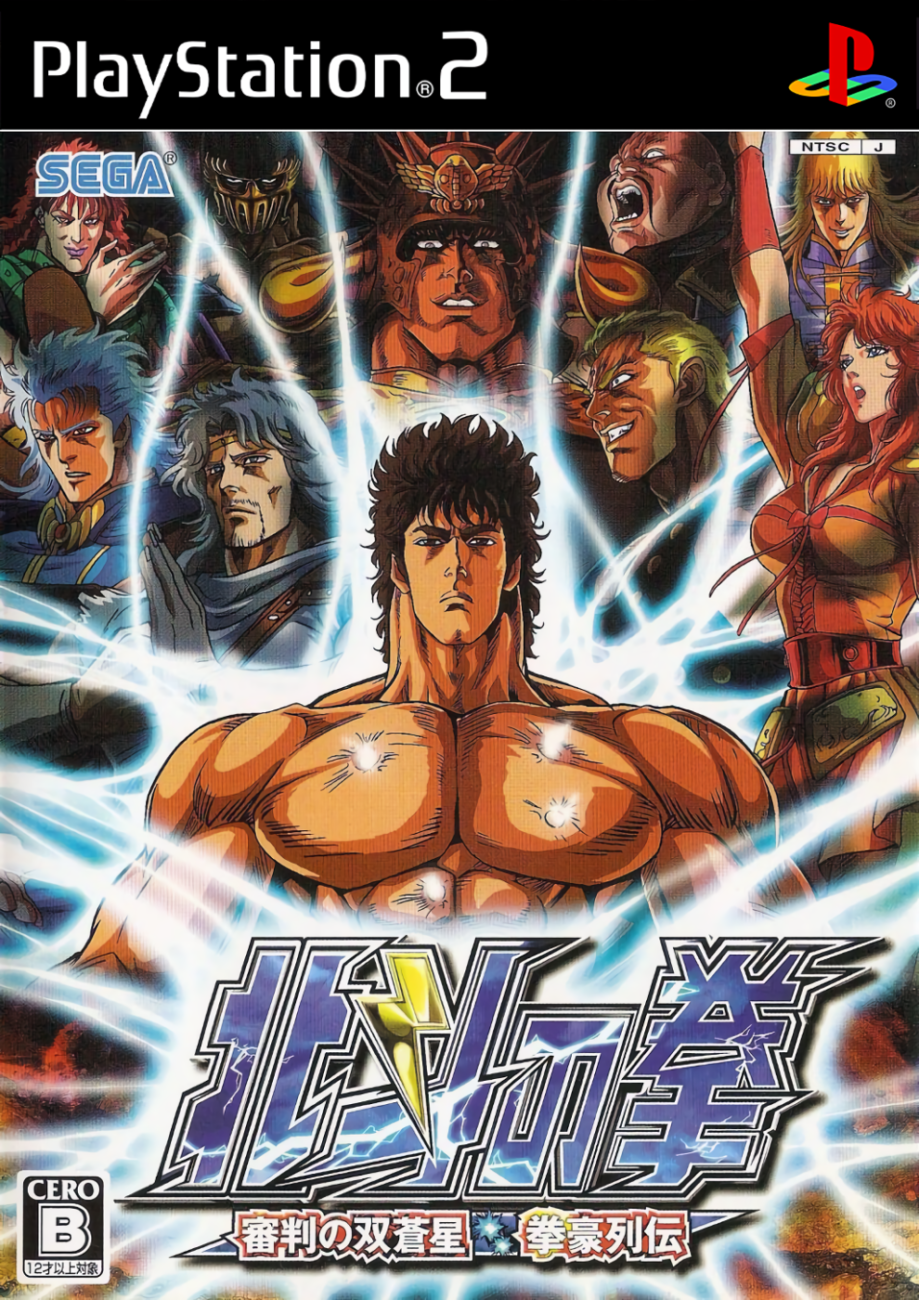
- Developer: Arc System Works
- Release Year: 2007
Based on the iconic manga and anime series Fist of the North Star, Hokuto no Ken is a port of the 2005 arcade version that was developed by Arc System Works. This game isn’t just about throwing punches—it’s about dominating your opponent with cinematic, high-impact combat. Players can perform finisher moves such as Fatal KOs, which can instantly defeat opponents once the Seven Stars of the Hokuto gauge is depleted.
Why It’s Worth Playing: With the combination of its fluid 2D sprite animation, crisp visuals, and lightning-fast gameplay, every fight in the game feels like a battle straight out of the series. Despite its faithful adaptation to the source material, very few fighting game fans are aware of this game’s existence. For fans of the series and fighting game aficionados alike, this title remains an exhilarating, must-play hidden gem of the PS2 era.
Kamen Rider Kabuto

- Developer: Bandai
- Release Date: November 30, 2006
Drawing directly from the popular TV series, Kamen Rider Kabuto nails the over-the-top flair of the show—complete with flashy transformations, explosive special moves, and dramatic finishing attacks that feel ripped from the final episode cliffhanger. The combat is punchy and intuitive, balancing ground combos with aerial attacks and quick counters that keep fights fluid and exciting. Each Rider boasts unique abilities and signature moves, from Kabuto’s beetle motif to the horned menace of Gatack. The stages are dynamic, often featuring destructible elements and environmental hazards that spice up every fight.
Why It’s Worth Playing: Kamen Rider Kabuto brings the high-octane world of tokusatsu superheroes to the PS2 with slick, fast-paced fighting action that’ll have fans shouting “Rider Kick!” in no time. If you’re a fan of Kamen Rider or just love fast-paced, flashy fighters with a healthy dose of nostalgia, Kabuto delivers a satisfying blend of showmanship and solid gameplay. It’s a rare chance to step into the boots of Japan’s iconic heroes and duke it out with style.
Ultraman Fighting Evolution 3

- Developer: Banpresto
- Release Date: December 2, 2004
Ultraman Fighting Evolution 3 is a love letter to the iconic tokusatsu franchise, delivering massive battles that pit towering heroes against colossal kaiju in explosive 3D arenas. From Ultraman’s signature Spacium Ray to the monstrous power of beasts like Gomora and Zetton, every fight feels like a TV episode come to life—complete with dramatic camera angles and earth-shaking special effects. The gameplay blends close-quarters brawling with ranged beam attacks, allowing for strategic mix-ups and frantic combos. Characters can morph between different forms mid-fight, adding depth and variety to the combat.
Why It’s Worth Playing: For tokusatsu enthusiasts and fighting fans craving giant monster mayhem, Ultraman Fighting Evolution 3 delivers a uniquely thrilling experience. Fans will appreciate the faithful roster that spans multiple Ultraman series, plus the inclusion of fan-favorite monsters and allies. It’s an explosive, larger-than-life fighter that captures the spirit of the show with every beam blast and monster roar.
War of the Monsters

- Developer: Incog Inc. Entertainment
- Release Date: January 14, 2003
War of the Monsters is pure, unfiltered kaiju chaos—a love letter to the cheesy, campy monster movies of the ’50s and ’60s, where the bigger the creature, the better the destruction. Step into the hulking shoes of gigantic beasts ranging from giant apes to radioactive lizards, and prepare to level entire cities with bone-crushing punches, devastating energy blasts, and environmental wreckage. The game’s 3D arenas are fully destructible playgrounds, where every skyscraper and bridge becomes a weapon or hazard. The fighting mechanics blend fast-paced brawling with special moves and power-ups, keeping battles unpredictable and wildly entertaining.
Why It’s Worth Playing: With a roster full of colorful monsters, each with unique abilities and playstyles, War of the Monsters turns every fight into a cinematic monster mash. It’s goofy, explosive, and endlessly fun—the perfect antidote to serious, button-mashing fighters. If you’ve ever dreamed of smashing Tokyo while throwing down with other giant creatures, this game is your ticket.
Godzilla: Unleashed

- Developer: Pipeworks Software
- Release Date: November 20, 2007
Godzilla: Unleashed throws you into the thick of the kaiju battle royale, letting you control the legendary King of Monsters and his monstrous rivals in brutal, city-smashing fights. With a massive roster of familiar faces—from Godzilla and Mothra to Mechagodzilla and Anguirus—the game offers fans a chance to recreate iconic showdowns or forge new, monstrous rivalries. Combat blends hand-to-hand wrestling moves with devastating beam attacks and stage hazards, making every battle feel like a massive, destructive brawl. The game’s 3D arenas are packed with interactive elements, letting you pick up cars, toss buildings, and even stomp out rival monsters in environmental mayhem.
Why It’s Worth Playing: For fans of giant monsters and over-the-top destruction, Godzilla: Unleashed is a must-play. It captures the spirit of classic kaiju battles with enough depth and chaos to keep you stomping and roaring for hours.
Onimusha Blade Warriors

- Developer: Capcom
- Release Date: November 27, 2003
Onimusha Blade Warriors is Capcom’s cheeky spin on the party brawler, blending the samurai-slashed world of Onimusha with frantic, cartoonish multiplayer combat. Think Super Smash Bros., but drenched in feudal Japanese flair and loaded with over-the-top special moves that slice and dice with style. The roster is a who’s who of Onimusha heroes and villains, each with unique weapons, combos, and devastating “super moves” that bring the series’ signature hack-and-slash action to a chaotic arena setting. The stages are vibrant and interactive, often featuring environmental hazards and power-ups that can quickly turn the tide of battle.
Why It’s Worth Playing: If you’re craving multiplayer madness with a samurai twist, Blade Warriors delivers a fun, fast-paced brawler that’s perfect for casual parties or nostalgic throwdowns. It’s the perfect blend of goofy fun and sword-swinging spectacle.
Honorable Mentions
Each of these titles brought something unique to the PS2 fighting scene—even if they didn’t quite crack the top 30, they’re worth a spin for fans looking to dive deeper into the era’s diverse offerings.
Dead or Alive 2: Hardcore
Fast, flashy, and fluid, this sequel amped up the speed and spectacle with its iconic counter system and dynamic stages that kept players on their toes.
Arcana Heart 2
An all-girl roster fighting with mystical powers and deep, technical mechanics, this one flew under the radar but is beloved by fans of niche, hardcore 2D fighters.
Capcom Fighting Evolution
A bold but uneven crossover experiment bringing together Capcom and SNK characters with varying success; a fun curiosity for crossover completists.
SNK vs. Capcom: SVC Chaos
SVC Chaos may not have the balance or polish of CvS2, but its intensity, atmosphere, and unique character lineup have cemented it as a cult favorite.
Conclusion
Let’s be real—the PS2 was the ultimate playground for fighting games, where every style under the sun got a chance to shine. Whether you’re into pixel-perfect 2D classics, jaw-dropping 3D slugfests, or crazy mash-ups that make you wonder, “Who even thought this was a good idea?”—the PS2 handled it all without breaking a sweat.
This was the era when developers went wild with creativity. Tag teams? Check. Beast transformations? Oh yeah. Giant robots duking it out? Absolutely. Anime ninjas, wrestling maniacs, and kaiju smashing cities like they own the place? All here, baby. And let’s not forget the arcade-perfect ports that made you question why you ever bothered with anything else.
So if you ever thought the PS2 was just a DVD player with games, think again. It was a fighting game factory, churning out hits and cult classics like it was no big deal. Dust off your old controller, pick your fighter, and jump back in—because this golden age wasn’t just nostalgia; it was the time when button-mashing became an art form. The ring’s still open. Are you?

